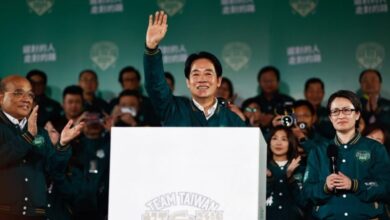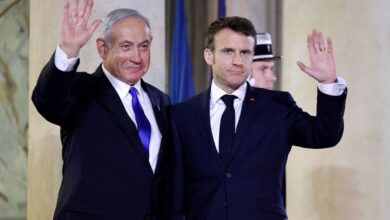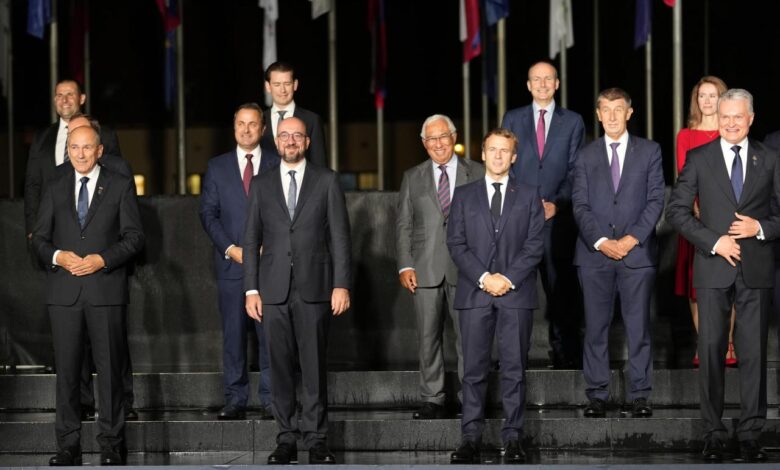
Europe Today Lots of Presidents, No Leader
Europe today is a case of lots of presidents yet nobody leading – a statement that feels increasingly accurate as we navigate the complex political landscape of the European Union. With a multitude of presidents, prime ministers, and commissioners all vying for influence, a clear, unified direction often seems elusive. This leaves the EU vulnerable to internal divisions and external pressures, raising questions about its effectiveness in addressing critical challenges like climate change, economic instability, and geopolitical tensions.
This post delves into the reasons behind this perceived leadership vacuum, exploring historical context, power dynamics, and the impact on European policy.
We’ll examine the roles of key players, compare past models of European leadership to the current fragmented system, and analyze how media portrayals and public opinion shape perceptions of the EU’s ability to act decisively. Finally, we’ll explore potential solutions and future scenarios, considering reforms and alternative leadership models that could strengthen the EU’s position on the world stage.
The Current State of European Leadership
Europe today presents a complex tapestry of political power, a vibrant yet often fragmented landscape where multiple leaderships coexist, sometimes harmoniously, often with friction. The sheer number of actors involved – from national leaders to supranational institutions – can lead to a diffusion of responsibility and a perceived lack of decisive, unified action on critical issues. This situation, while reflecting the diverse nature of the European project, also presents significant challenges in navigating the continent’s many pressing concerns.
The absence of a single, all-powerful leader is a defining feature of the European Union’s structure, designed intentionally to balance national sovereignty with collective action. However, this very design can lead to gridlock and a lack of swift responses to crises, especially when consensus among numerous actors is required. This is further complicated by the varying political ideologies and national interests at play, making coordinated policy-making a constant negotiation and compromise.
Key European Leadership Roles and Responsibilities
Understanding the current state of European leadership requires examining the roles and responsibilities of key players. The following table illustrates the different spheres of influence and areas of focus for some of the most prominent figures.
Europe today feels like a ship with too many captains, each shouting orders but none actually steering. It makes you wonder about global systems in general – can we really trust the metrics we use to judge success? The question of whether can the worlds most influential business index be fixed is a crucial one, because flawed indexes can lead to flawed policies, just like Europe’s current leadership vacuum.
Ultimately, fixing the indexes might be easier than fixing Europe’s fractured power dynamic.
| Leader | Role | Responsibilities | Example of Recent Action |
|---|---|---|---|
| President of the European Council (Charles Michel) | Sets the agenda for EU summits, chairs meetings of EU leaders | Facilitating consensus among member states, representing the EU externally on major issues | Mediating discussions on the EU’s response to the war in Ukraine. |
| President of the European Commission (Ursula von der Leyen) | Proposes legislation, implements EU policies, manages the EU budget | Executive power within the EU, responsible for day-to-day administration and policy implementation | Presenting the “Fit for 55” package of climate change legislation. |
| National Presidents/Prime Ministers (e.g., Emmanuel Macron, Olaf Scholz) | Head of state or government of individual member states | Representing national interests within the EU, implementing EU policies at the national level | Negotiating national energy policies within the context of the EU’s overall energy strategy. |
| High Representative of the Union for Foreign Affairs and Security Policy (Josep Borrell) | Leads the EU’s foreign policy | Shaping and implementing the EU’s external relations, representing the EU in international forums | Leading EU diplomatic efforts regarding the conflict in Ukraine. |
Historical Context of European Integration
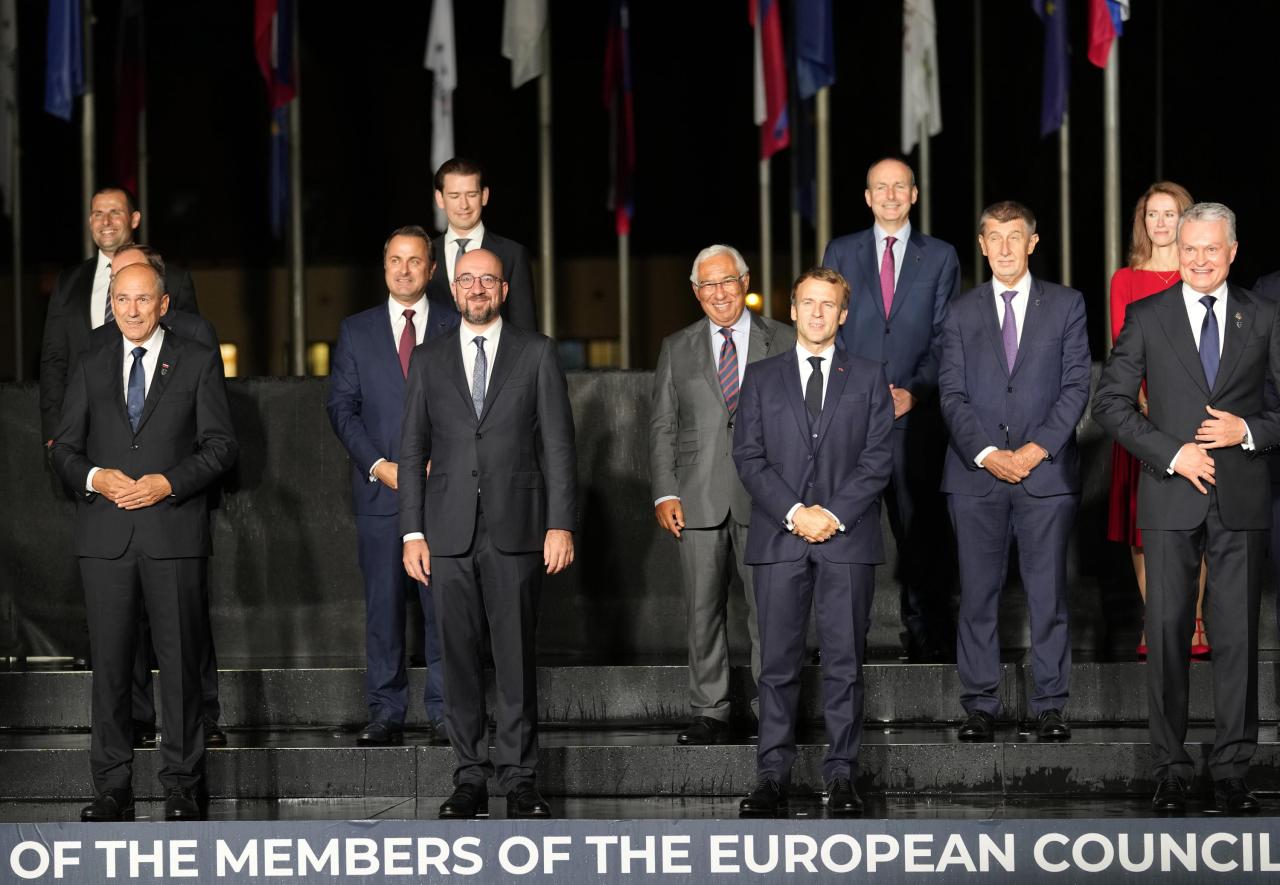
The current perceived lack of strong, unified leadership in Europe is a stark contrast to periods in its history where powerful empires and alliances forged significant continental influence. Understanding these historical precedents, both successful and unsuccessful, is crucial to grasping the complexities of the present-day European Union. Examining these historical models reveals both the potential benefits and pitfalls of various leadership approaches.The fragmented nature of contemporary European leadership stands in sharp contrast to earlier periods marked by centralized authority.
Europe today feels like a fragmented mess; so many leaders, yet a distinct lack of unified direction. It makes me think of the petty political squabbling across the Atlantic, like the situation highlighted in this article: white house slams dems for making shootings about trump fundraising off tragedy. The focus on partisan bickering instead of real solutions mirrors Europe’s struggles – everyone’s busy pointing fingers, leaving actual leadership wanting.
A comparison of these past models with the EU’s current structure highlights the challenges of balancing national sovereignty with collective action.
Examples of Strong, Unified European Leadership in History
Several periods in European history witnessed powerful, centralized leadership that profoundly shaped the continent. The Roman Empire, for instance, unified vast swathes of Europe under a single political and administrative system, fostering trade, infrastructure development, and a common legal framework. While its longevity was eventually undermined by internal strife and external pressures, the Roman model exemplifies the potential benefits of strong, centralized leadership in creating a cohesive and prosperous European entity.
The Carolingian Empire under Charlemagne, though shorter-lived, also demonstrated the power of a unified ruler in promoting cultural and political integration across disparate regions. This era saw the revival of learning, the standardization of weights and measures, and the expansion of the Christian faith, showcasing the impact of a strong central authority on societal development. In contrast, the present-day EU operates under a system of intergovernmental cooperation, with power diffused among member states.
This decentralized approach presents both opportunities and challenges.
Comparison of Past and Present Leadership Models
Past models of European leadership, whether imperial or based on alliances, typically relied on a hierarchical structure with a dominant power at the center. This often led to periods of relative stability and significant achievements in areas like infrastructure, law, and cultural exchange. However, such centralized systems also suffered from inherent weaknesses, such as the potential for tyranny, the suppression of regional diversity, and vulnerability to internal dissent or external threats.
The Roman Empire’s eventual fragmentation, for example, highlights the limitations of relying on a single point of power.The current EU leadership structure, on the other hand, emphasizes consensus-building and cooperation among member states. This approach prioritizes national sovereignty and avoids imposing a single dominant power. While this decentralized model promotes inclusivity and reduces the risk of authoritarianism, it also creates challenges in terms of decision-making speed and efficiency.
The complexities of achieving consensus among 27 member states can lead to delays and compromises that hinder effective action. The current EU system avoids the pitfalls of unchecked centralized power but faces difficulties in responding decisively to major crises or implementing ambitious policy initiatives.
Timeline of Key Events Shaping European Integration and Leadership Structures
The path toward European integration has been a long and complex process, shaped by a series of pivotal events that have significantly influenced the development of its leadership structures.
| Date | Event | Impact on Leadership Structures |
|---|---|---|
| 476 CE | Fall of the Western Roman Empire | Fragmentation of Europe into numerous independent kingdoms and states, initiating a period of decentralized leadership. |
| 800 CE | Charlemagne crowned Holy Roman Emperor | Temporary unification under a strong central authority, demonstrating the potential for centralized leadership in Europe. |
| 1957 | Treaty of Rome establishing the European Economic Community (EEC) | Creation of a supranational organization with shared governance, a departure from purely national leadership. |
| 1993 | Treaty of Maastricht establishing the European Union (EU) | Expansion of the EU’s scope to encompass political cooperation and common foreign policy, further shifting the balance of power towards supranational institutions. |
| 2004 | EU enlargement to include ten new member states | Significant increase in the complexity of decision-making within the EU, highlighting the challenges of balancing national interests with collective action. |
Analysis of Power Dynamics within the EU
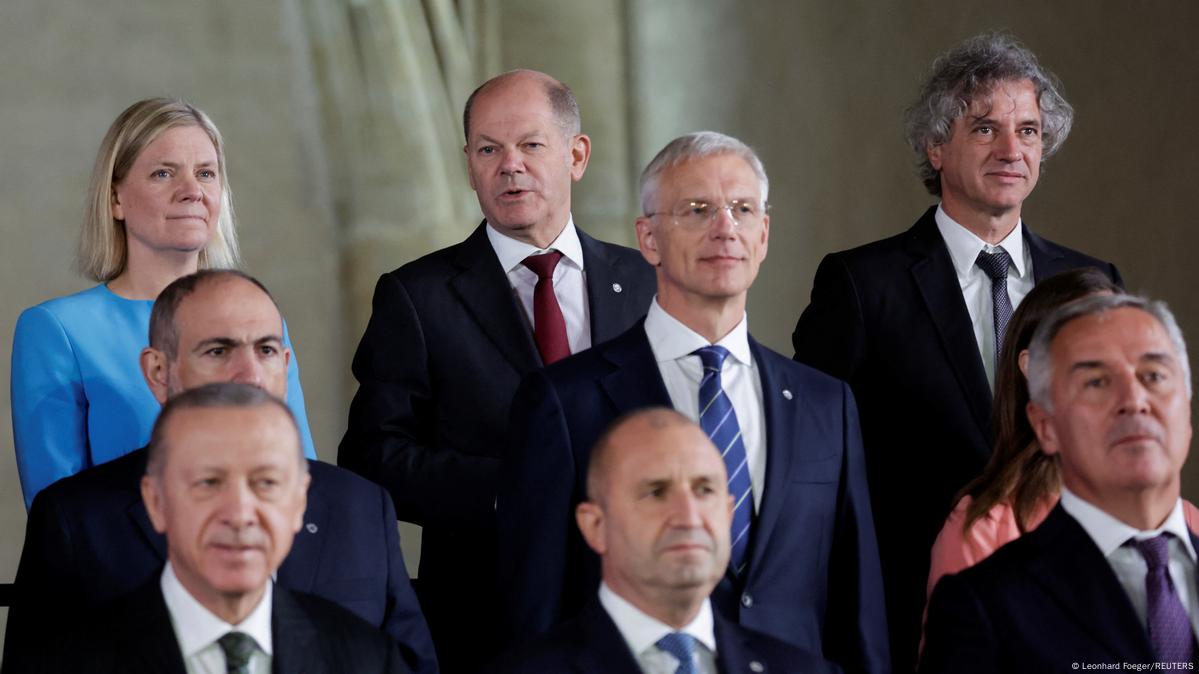
The European Union, despite its aim for collective decision-making, is a complex tapestry of interwoven national interests and power dynamics. Understanding these dynamics is crucial to grasping the EU’s successes and shortcomings in navigating global challenges. The distribution of power isn’t uniform, with certain member states wielding significantly more influence than others. This influence stems from a combination of economic strength, political clout, and demographic weight.The interplay between national self-interest and the EU’s collective goals is a constant tension.
While cooperation brings benefits, individual states often prioritize their own agendas, leading to compromises and, at times, gridlock. This tension is particularly evident in areas like fiscal policy, migration, and defense.
Major Power Blocs and Their Influence
Several power blocs significantly shape EU decision-making. The Franco-German axis, historically the engine of European integration, remains a powerful force. Their combined economic weight and political influence often sets the agenda, particularly in areas like economic policy and foreign affairs. The Benelux countries (Belgium, Netherlands, Luxembourg) often act in concert, leveraging their strong economic performance and commitment to EU ideals.
The Visegrad Group (Poland, Hungary, Czech Republic, Slovakia) frequently presents a united front on issues concerning sovereignty and migration, often diverging from the mainstream EU position. Finally, the Nordic countries (Denmark, Sweden, Finland, Norway, Iceland) often share a common approach on environmental and social issues, but their influence is somewhat diluted by Norway’s non-EU membership.
Conflicts of Interest Between National and EU Goals
The inherent tension between national interests and the EU’s collective goals is a recurring theme. For example, disagreements over budgetary contributions reflect different national priorities and economic capacities. Countries with stronger economies may resist contributions deemed disproportionate to their perceived benefit, while others may struggle to meet their obligations. Similarly, migration policy often sparks conflict, as member states disagree on burden-sharing and approaches to border control.
National concerns about sovereignty frequently clash with the EU’s aim for deeper integration, particularly in areas like judicial cooperation and security. The recent debates surrounding the rule of law mechanisms within the EU highlight this tension, with some states resisting what they perceive as encroachment on national sovereignty.
Visual Representation of Power Dynamics
Imagine a network diagram. At the center is the European Commission, representing the EU’s executive branch. Lines connect the Commission to larger nodes representing the major power blocs: a large node for the Franco-German axis, smaller but significant nodes for the Benelux, Visegrad, and Nordic groups. The size of each node corresponds to its relative economic and political influence.
Thicker lines indicate stronger relationships and more frequent collaboration, while thinner lines represent less influential or more strained relationships. Smaller nodes representing individual member states branch out from the larger blocs, illustrating their affiliation and influence within the broader EU system. Arrows on the lines indicate the direction of influence, showing how decisions flow and alliances are formed.
For example, a thick arrow from the Franco-German node to the Commission illustrates their significant influence on EU policy. Similarly, arrows between nodes within the same bloc show the collaborative nature of their relationship. The overall image emphasizes the centrality of the Commission but also highlights the significant influence exerted by the major power blocs, and the inherent tension between these blocs and the collective goals of the EU.
Impact on European Policy and Decision-Making
The perceived lack of strong, unified leadership in Europe significantly impacts the effectiveness and speed of policy implementation across various sectors. The fragmented nature of decision-making, often involving lengthy negotiations between numerous national interests, leads to delays and compromises that can weaken the overall impact of EU policies. This is particularly evident when addressing complex, interconnected challenges requiring swift and decisive action.The current multi-layered structure of European governance, while designed to balance national sovereignty with collective action, often hinders rapid responses to crises.
The need for consensus among 27 member states, each with its own political priorities and economic interests, inevitably slows down the legislative process. This inherent complexity can lead to missed opportunities and inadequate responses to pressing issues.
Economic Policy
The absence of a single, powerful figurehead can lead to inconsistencies in economic policy. For example, differing national approaches to fiscal austerity during the Eurozone crisis hampered the effectiveness of collective responses. The lack of a clear, unified strategy allowed national interests to dominate, resulting in a prolonged and painful recovery for some member states. This highlights the difficulty in coordinating economic policies across diverse national contexts without strong central leadership.
Foreign Policy
Europe’s foreign policy often suffers from a lack of strategic coherence. The absence of a single voice on the global stage can weaken the EU’s influence and effectiveness in international negotiations. For instance, differing national perspectives on issues such as relations with Russia or the Middle East can create internal divisions and prevent the EU from presenting a united front.
Europe today feels like a ship with too many captains, each shouting orders but no one truly steering. It’s a similar feeling of lost leadership to the situation with the pandemic, where, as this article reveals, Fauci clearly misled congress over covid 19 origins, according to a former CDC director. The lack of clear, decisive action, whether in global health or European politics, leaves us all adrift.
Ultimately, strong leadership is what we desperately need on both fronts.
This can lead to a diluted impact on global affairs and diminished ability to shape international events.
Environmental Policy
The EU’s ambitious environmental goals, such as the European Green Deal, require significant coordination and commitment from all member states. However, the lack of a compelling, unifying leader can hinder the implementation of these policies. National resistance to certain measures, such as carbon pricing or stricter environmental regulations, can significantly slow down progress and compromise the EU’s ability to meet its climate targets.
This is particularly concerning given the urgency of addressing climate change.
Public Perception and Media Representation
The current state of European leadership is a complex issue, and its portrayal in the media significantly shapes public opinion. Narratives often focus on the perceived shortcomings of the EU’s institutional structure and the lack of strong, decisive leadership in addressing major crises. This portrayal, while sometimes accurate in highlighting genuine challenges, can also oversimplify the complexities of European politics and create a sense of disillusionment among citizens.The media’s role in framing the narrative around European leadership is multifaceted.
News outlets, often driven by the need for compelling headlines, tend to highlight disagreements and internal conflicts within the EU, sometimes neglecting the collaborative efforts and compromises that are essential to the decision-making process. This can lead to a skewed perception of dysfunction, overshadowing the successes and positive outcomes of European cooperation. Furthermore, the sheer volume of information and differing perspectives can make it difficult for citizens to form a comprehensive understanding of the issues at hand, potentially fueling cynicism and distrust.
Media Portrayals of European Leadership
Media portrayals frequently center on criticisms of the EU’s response to various challenges. For example, the handling of the migrant crisis, the COVID-19 pandemic, and the war in Ukraine have all drawn significant media attention, often highlighting disagreements among member states and perceived slow or inadequate responses from EU institutions. These narratives often focus on individual national interests overriding collective action, reinforcing the image of a fragmented and ineffective Union.
Conversely, positive aspects of EU collaboration, such as the joint procurement of vaccines during the pandemic or the coordinated sanctions against Russia, are sometimes under-reported, contributing to a predominantly negative public perception.
Public Opinion on European Institutions and Leaders
Public opinion surveys consistently reveal a mixed picture regarding the effectiveness of European institutions and their leaders. While there is generally support for the fundamental principles of European integration, levels of trust in EU institutions and their leaders vary significantly across member states and fluctuate depending on specific events and policy decisions. Factors such as economic performance, perceived responsiveness to national concerns, and the handling of major crises all significantly impact public opinion.
A sense of democratic deficit, the feeling that EU decision-making processes are too remote and unresponsive to citizen concerns, also contributes to public dissatisfaction.
Key Findings from Opinion Polls and Surveys
The following bullet points summarize key findings from recent opinion polls and surveys concerning European leadership (Note: Specific poll data and sources would need to be cited here for complete accuracy. This is a placeholder for that data):
- Trust in the European Commission and the European Parliament varies considerably across member states, with higher levels of trust generally observed in countries that have benefited more from EU membership.
- Public satisfaction with the EU’s handling of major crises, such as the migrant crisis and the COVID-19 pandemic, has been consistently low in many member states.
- Concerns about the democratic legitimacy of EU institutions and the influence of national governments remain prevalent across Europe.
- Support for European integration tends to be higher among younger generations, suggesting a potential shift in public opinion over time.
- Economic factors significantly influence public opinion regarding the EU, with periods of economic hardship often leading to increased Euroscepticism.
Potential Solutions and Future Scenarios: Europe Today Is A Case Of Lots Of Presidents Yet Nobody Leading
Europe’s current leadership vacuum presents a significant challenge to its future stability and effectiveness. The fragmented nature of decision-making and the lack of a strong, unified voice on the global stage hinder the EU’s ability to address pressing issues such as climate change, economic instability, and security threats. Addressing this requires a multifaceted approach involving institutional reforms and a shift in the understanding of European leadership itself.The path forward necessitates a reimagining of the EU’s governance structure and a more proactive approach to leadership.
Simply tweaking existing mechanisms won’t suffice; bolder, more fundamental changes are needed to ensure the EU remains a relevant and effective actor in the 21st century. This involves examining both the institutional framework and the underlying political dynamics that shape European decision-making.
Reforms to Enhance European Leadership Effectiveness
Several reforms could significantly enhance the effectiveness of European leadership. These include strengthening the role of the European Council President, clarifying the responsibilities of the European Commission, and improving the efficiency of legislative processes. For example, a more streamlined legislative process, perhaps inspired by the successful models of certain national parliaments, could drastically reduce the time it takes to enact crucial legislation.
Similarly, a clearer division of responsibilities between the Council and the Commission could reduce duplication and improve accountability. A strengthened President of the European Council, with a more proactive and visible role in setting the EU’s agenda, could provide the necessary leadership to navigate complex challenges. The current system, characterized by consensus-seeking, often leads to slow and cumbersome decision-making, particularly in crisis situations.
A more decisive approach, while respecting the diverse interests of member states, is crucial.
Alternative Models of European Leadership, Europe today is a case of lots of presidents yet nobody leading
The current model of distributed leadership, while reflecting the EU’s unique structure, has proven insufficient. Alternative models could be considered, drawing inspiration from other successful multinational organizations or federations. One possibility is a more centralized approach, akin to a parliamentary system with a stronger executive branch. This, however, raises concerns about potential erosion of national sovereignty. Another model could involve rotating presidencies with clearly defined mandates and increased powers, ensuring a greater sense of shared responsibility and leadership.
This would require a significant shift in the power dynamics between member states. Alternatively, the EU could explore a hybrid model, combining elements of centralized and distributed leadership to address the specific challenges faced by different policy areas. The success of such models would heavily depend on the willingness of member states to cede some degree of national autonomy for the greater good of the union.
Hypothetical Scenario: Maintaining the Status Quo vs. Implementing Reforms
Consider two contrasting scenarios: one where the current structure remains largely unchanged, and another where significant reforms are implemented. In the first scenario, the EU continues to grapple with slow decision-making, internal divisions, and a lack of decisive leadership on the global stage. This could lead to a decline in the EU’s influence, increased internal fragmentation, and a greater susceptibility to external pressures.
Member states might increasingly prioritize national interests over collective action, weakening the EU’s ability to address shared challenges. This resembles the challenges faced by the EU during the Eurozone crisis, where the lack of a unified response exacerbated the economic difficulties.Conversely, in the scenario where significant reforms are implemented, the EU might experience a revitalization of its leadership and decision-making processes.
A more streamlined and efficient system could allow the EU to respond effectively to global challenges, strengthening its position on the world stage. Increased coordination and collaboration among member states could lead to a greater sense of unity and purpose, fostering a stronger sense of European identity. This scenario mirrors the success of the EU in areas such as the single market, where effective leadership and well-defined policies have delivered tangible benefits to member states.
The key difference lies in the proactive adoption of reforms and the willingness of member states to embrace a more integrated approach to governance.
The question of effective leadership in Europe is far from simple. While the EU boasts a plethora of powerful figures, the lack of a singular, unifying voice often hinders its ability to respond effectively to global challenges. The current system, while complex and nuanced, presents both opportunities and vulnerabilities. Ultimately, the future of European integration hinges on finding a way to reconcile national interests with collective goals, fostering a more unified and decisive approach to leadership.
This requires not just institutional reform, but also a shift in mindset, embracing collaboration and a shared vision for the future of Europe.


